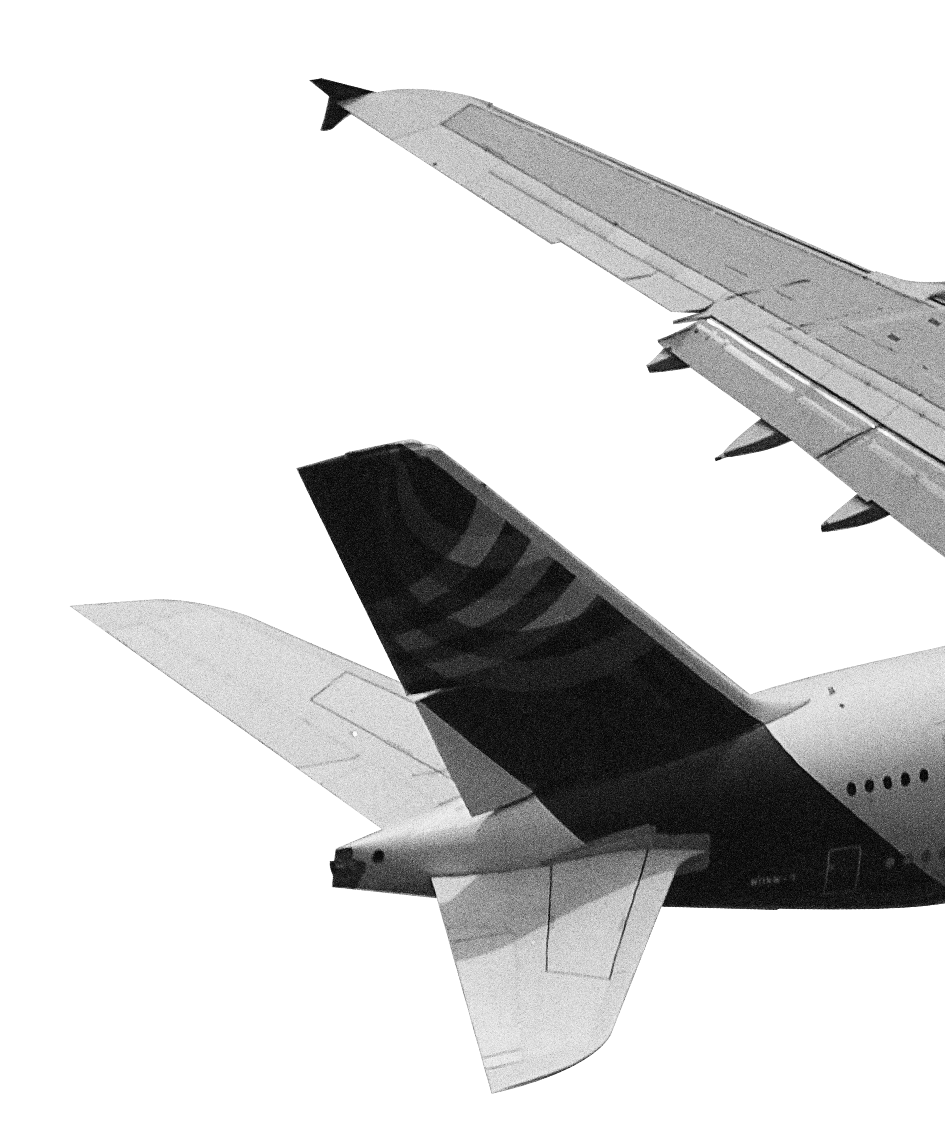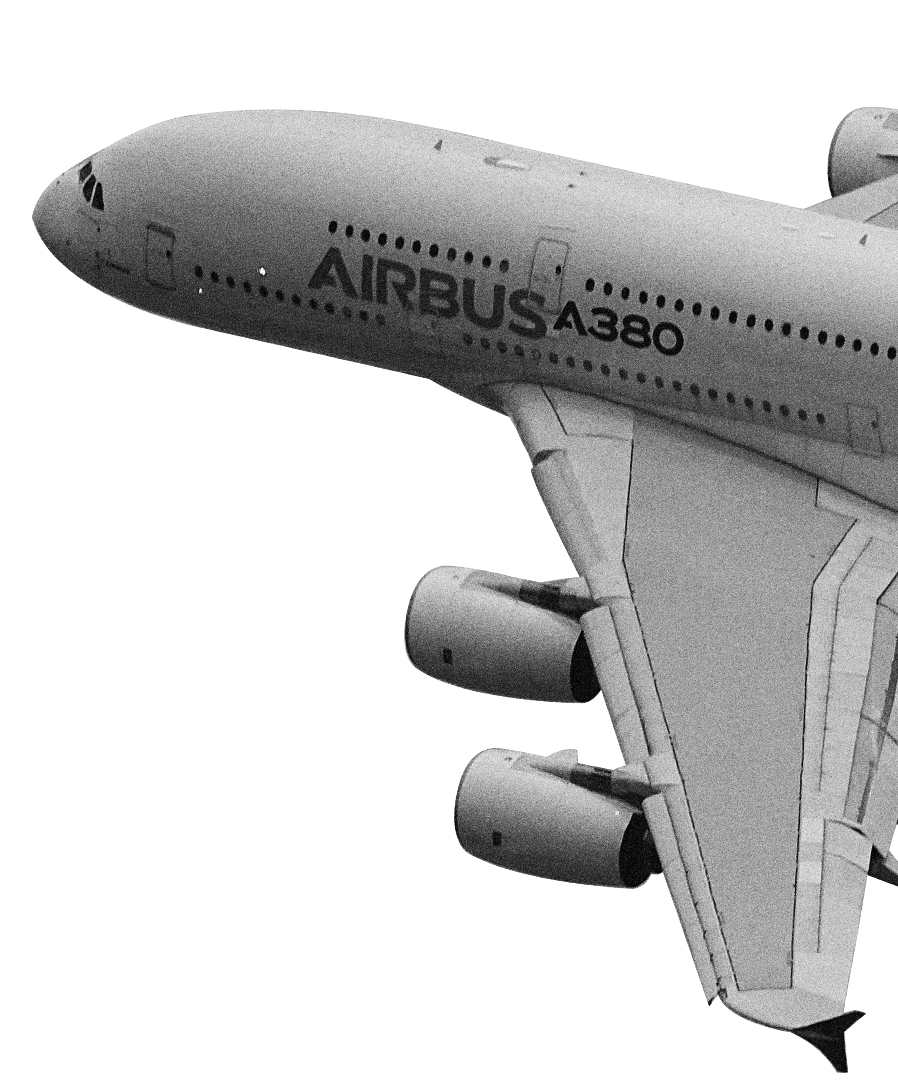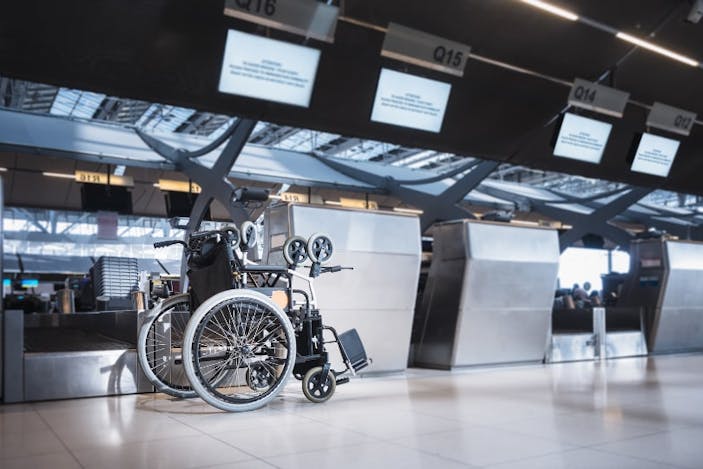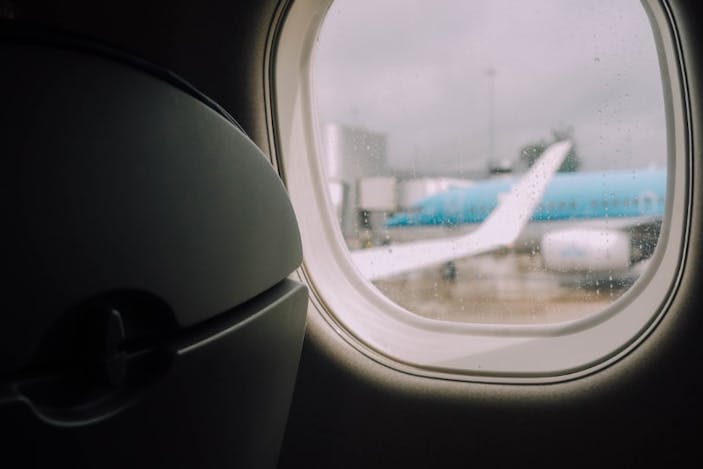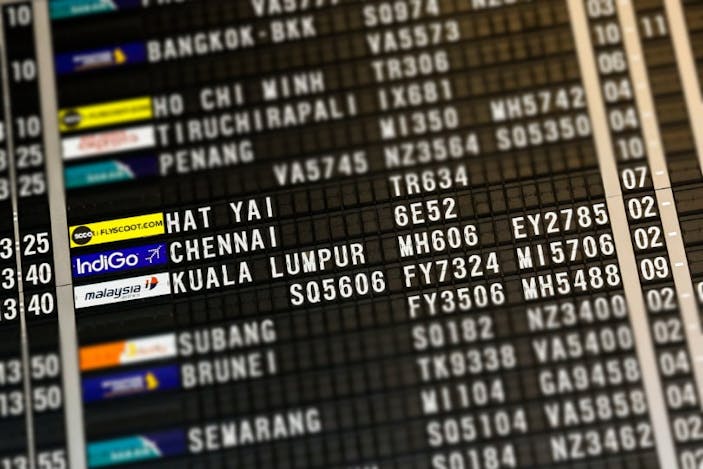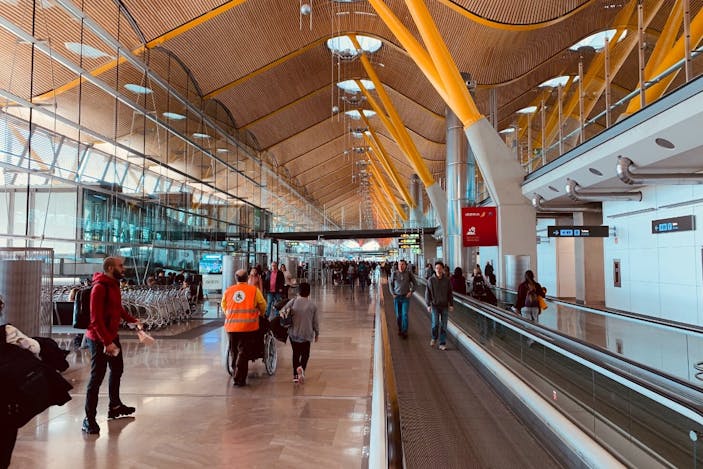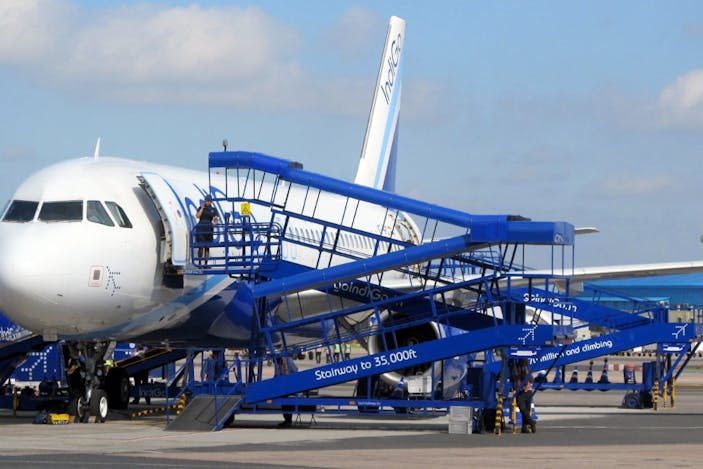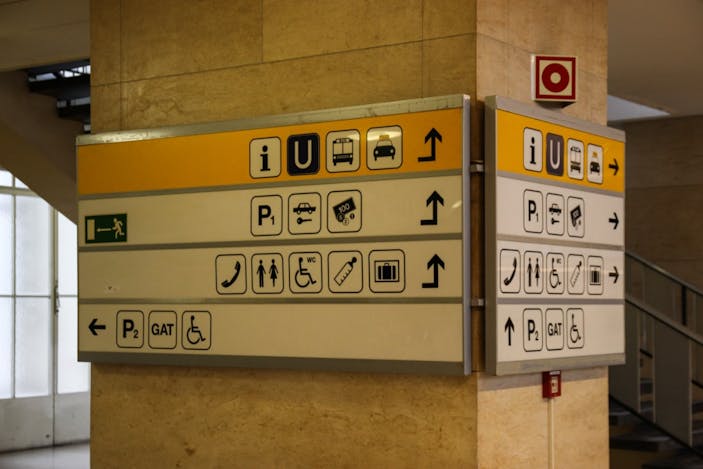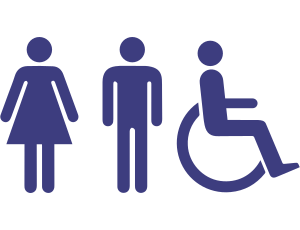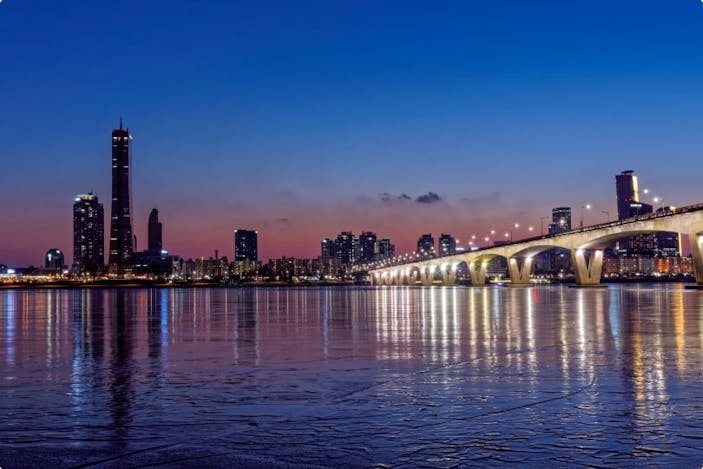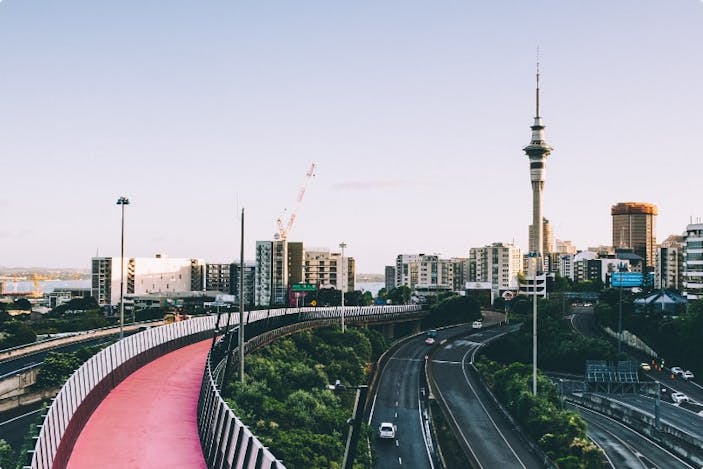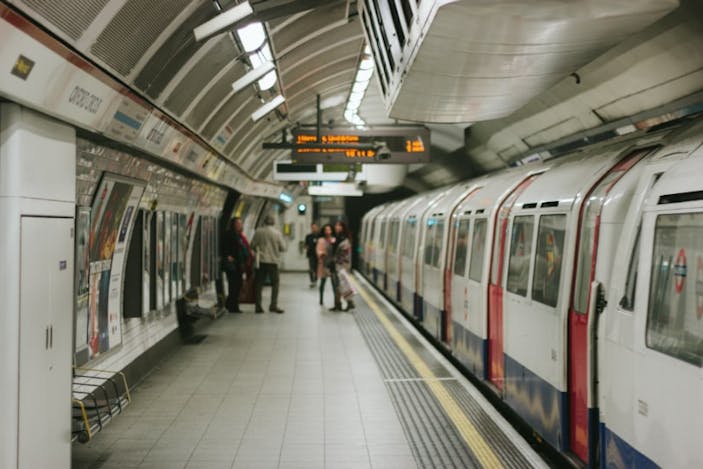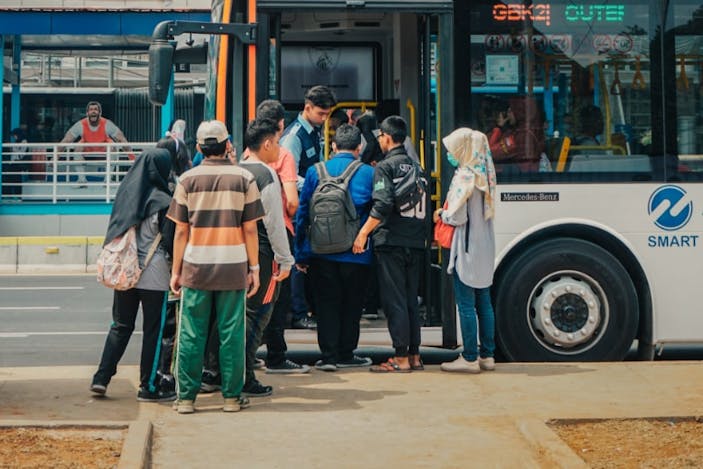The full guide to flying with a disability
Introduction
Everyone has the right to enjoy a trip abroad. Most of us take holidaying to far-flung destinations for granted. It’s easy to hop on a plane and jet off somewhere luxurious. For those flying with a disability, things can be slightly more challenging.
But while that’s the case, it shouldn’t stop someone with accessibility needs from flying. It takes a bit more planning and preparation, but travelling with a disability is something which is easier than it’s ever been before.
In this guide, we’ll discuss everything you can do to make planning your holiday easier. From the flights themselves, to staying safe while you’re away, this is your one-stop-shop for accessible travel advice.
01. Accessible travel for UK tourists
- Disabled travel statistics
- Barriers for disabled travellers
- Travel initiatives to help
02. Flying with a disability
- Getting medical clearance
- Help you can get at airports
- Getting special assistance on your flight
- Travelling with medical and mobility equipment
03. Enjoying an accessible holiday
- Booking a disability-friendly hotel
- Most accessible cities in the world
- Disabled holiday dos and don’ts
04. Medical advice for travellers
- Medical advice for disabled travellers
- Advice for other types of travel
- Creating a pre-holiday checklist
05. FAQs & secondary sources
- FAQs
- Links & secondary sources
Disabled travel statistics
A recent study from the UK Civil Aviation Authority (CAA) highlights the frequency with which disabled people are travelling. Of the survey taken, as many as 27% of people flying said they had a disability of some variety.
As many as 57% of these travellers said they had difficulty when accessing an airport or flying. Those numbers sound damning, but as many as 82% of the same demographic said they expected to travel the same amount or more on planes across the next year.
Despite ongoing issues, the determination to get out and see more of the world overrides problems faced at the airport.
And, encouragingly for UK airports, the biggest hurdle for disabled travellers seems to come at the end of their journey. 10% of those asked said they were either dissatisfied or very dissatisfied with their treatment at a destination airport.
Perhaps most interestingly of all, disabled travellers cited the booking process as the point at which they were most dissatisfied with their service. As many as 33% of people said they were unhappy with the opportunities provided when it came to asking for assistance at this stage.
With as many as 36% of all people living in the UK with a disability flying at some point in 2018, there’s a clear need for travel to be made as accessible as possible.
Barriers for disabled travellers
There’s no one issue which applies across the board for all disabled travellers. There are a series of hurdles which you might face throughout any point of your journey.
Some of the most prevalent include:
![Wheelchair at checkin]()
Wheelchair damage
A wheelchair is a critical piece of equipment for many disabled travellers. Worryingly, a recent report suggested that major airlines in the US lost or damaged as many as 26 wheelchairs on a daily basis. With some chairs costing tens of thousands of pounds, this is a natural concern for travellers.
![view from plane]()
Being abandoned on a plane
It sounds unlikely, but you’d be surprised at what can happen when you arrive at another airport. In one high-profile example, Paralympian Anne Wafula Strike was left on a plane at Stansted Airport, when accessibility staff failed to turn up and collect her. She ended up sitting on the plane alone for 45 minutes as she waited for staff.
![Departures board]()
Confusion or a lack of clarity in the booking process
As we’ve already seen, this is a stage where people have explicitly cited problems they’re having. While often given the option to add assistance at the booking stage, it can be unclear what’s actually involved. Usually, the largest confusion lies in what support you’ll receive at your destination airport.
![Medication packet]()
Confusion or a lack of clarity in the booking process
You’ll need a doctor’s letter if you’re taking 100ml or more of medication onto the plane. You also must make sure to check the laws on this for the country you’re headed to. They may be different to the UK.
Travel initiatives to help
Specific schemes have been set up to help make things easier. These have been created with the intent of making flying as stress-free as possible for disabled travellers.
Some of the current initiatives which are available include:
Hidden disabilities scheme
This was created by Virgin Atlantic, and is focused on providing support to airport users with less visibly obvious issues. They do this by encouraging people with unnoticeable disabilities to wear a special pin or badge.
Staff at most major airports have been specially trained to spot and assist these pin-wearers at every opportunity. They’ll help to lead them through the airport, arrange in-flight entertainment or help them with priority boarding. Ultimately, the aim is to make travel as easy as possible for them.
Government-backed aviation strategy
The government has been keen in recent years to provide support for disabled people across all walks of life. This has again been the case when it comes to air travel.
They’ve outlined a number of innovations they’ve made to help make accessible flying simpler. Some of their top initiatives are things like:
- Priority to be given to wheelchair users when boarding
- National training schemes for all members of airport staff
- Increasing the number of on-board facilities for disabled travellers
- Doing more to raise awareness of accessible flying needs
The needs of people with autism spectrum disorder (ASD) are different to those of most flyers. Sensory disturbances are a lot more frequent, and, in a busy environment like an airport, it’s not uncommon for people with ASD to feel uncomfortable.
In order to combat this, a lot of airports are adapting to the needs of these flyers. APH provide a list of airports in the UK, looking at those who do and don’t cater to ASD requirements. They battle the side effects of the condition by providing quiet havens for people to rest in. This break from the hustle and bustle of a busy terminal can be incredibly useful.
The needs of people with autism spectrum disorder (ASD) are different to those of most flyers. Sensory disturbances are a lot more frequent, and, in a busy environment like an airport, it’s not uncommon for people with ASD to feel uncomfortable.
Getting medical clearance
Before you travel, you’ll need to make sure you have medical clearance from a healthcare professional to do so.
Most airports will ask you about this when you say you’d like additional assistance. Usually, a medical check will be carried out in two steps:
01. Provide information about your condition
This means informing them about exactly what your condition is, and how it might affect you while travelling. For most travellers this is the first and last stage. So long as your condition isn’t negatively impacted by travel, no further clearance will be required.
02. Completing a form
If the airport requires more detail, at this point you’ll be asked to fill out a form. This will be different depending on where you’re travelling from. There’s a chance a doctor’s note will be required.
Help you can get at airports
When you arrive at an airport, you should be able to locate an assistance point. These are located both in and outside of terminals, and are set up to help make getting about more easily.
If you have driven to a UK airport and need to park there are special arrangements at some airports for Blue Badge or Disabled travellers. We have added a section to our airport parking page with more detailed information than we can cover in this guide.
If you arrive at a point and no member of staff is available, you’ll be able to ring the number provided. Someone should be along to come and pick you up shortly after this.
The staff at these points can help you with a number of things, including:
![Terminal building]()
In the airport
You may have noticed the small transport shuttles which ferry people throughout a terminal. These can:
- Take you to designated special assistance areas within the terminal
- Help you arrive at and get through check-in and bag drop-off points
- Take you through security into the departure lounge, and on to the departure gate
This can be a much quicker means of getting from A to B for travellers who struggle with getting about on their own.
![ramp onto plane]()
Boarding
Getting on a plane can be a challenge if you’re disabled. As such, specialist staff will do what they can to make the process as easy as possible.
They’ll help you to get through the gate, find your seat on the plane and stow your carry-on bag. This is usually carried out with a number of different pieces of equipment, such as:
- Ambi-lifts
- Ramps
- Small transfer wheelchairs
These are designed to make things as comfortable for you as possible.
![Signs in airport]()
At your destination airport
Staff from the airport you’re travelling to should return your wheelchair. You may also be entitled to help through the airport. In some circumstances, this could be all the way to a train or bus station.
This is something you might want to liaise with the destination airport on ahead of time. It would be useful to know what is and isn’t covered on their end.
Getting special assistance on your flight
By contacting an airport ahead of time, there are a number of ways you can guarantee you get special assistance on your flight.
![warning sign icon]()
Alternative safety warnings
Usually, safety warnings are given when a flight attendant stands up in an aisle before a flight. These might not be as useful for a disabled traveller. As such, you can ask to be given a one-on-one safety briefing.
![Printed material icon]()
Audio and visual materials
This might involve using materials which are different to what other passengers have. For example, for those who are hard of hearing, an audio device allows for important messages to be more clearly understood.
![Accessibility people icon]()
Assistance to the toilet
Wheelchair users should be provided with a clear and easy route to the bathroom. That means having a readily available chair on board to transport them.
![Seatbelt icons]()
Choosing a specific seat
Informing an airport ahead of time about your needs helps you clinch a seat closer to the toilet.
Travelling with medical & mobility equipment
One of the biggest concerns for anyone flying with a disability is whether or not they can transport all of their equipment. Again, if you plan far enough ahead of time, this shouldn’t be an issue.
Mobility
When it comes to your motability equipment, you’ll need to:
- Tell the airline the make and model of your wheelchair. Be sure to let them know the exact size.
- Have the operating manual with you. This could be handy if the airport feel like they need more information about your mobility unit.
- Details on how to collapse the chair (if possible). This can help to avoid accidental damage.
You’ll be allowed to carry up to two different types of mobility equipment. One of these can be waiting for you at your destination airport if needs be.
While you’ll want to avoid the necessity to claim, you’ll usually be able to get as much as £1,300 back from an airport if they damage your medical or mobility equipment. This probably won’t cover all the costs, so be sure to also take out insurance as an additional level of protection.
Medication
If you need to take medication onboard, you’ll need to carry a medical certificate with you to make sure you’re not exceeding legal restrictions.
Most airports will only allow 100ml of medicine (whether in liquid or gel form) through security. The only way for you to be able to carry more than this is by having that certificate from your doctor.
Booking a disability-friendly hotel
Making sure your hotel caters to your needs is crucial. After all, this is where you’ll be sleeping and spending a fair chunk of your trip. It needs to be your safe space for the length of your stay.
Here are some tips to keep in mind when it comes to looking for accessible airport hotels.
![Image icon]()
Look at photos of the room
This is something most people do, but it’s important for disabled holidaymakers. Try to identify if the rooms being shown are going to be able to support your needs. Are there easy ways in and out of the shower or bath? Are the beds accessible from a wheelchair?
![Rating icon]()
Check for reviews
Read reviews left of the hotel by other travellers with a disability. These can sometimes be hard to find amongst a sea of reviews. As such, think about turning to an app like Access Earth. This has been set up to specifically review the accessibility of hotels and other locations.
![Map icon]()
Ease of routes from the hotel
This is again something everyone takes into account, but is especially important when getting about is already a slightly more challenging task. The best way to get around this is by choosing accommodation which is located relatively centrally in the city or town you’re in. This reduces travel time to most major tourist spots and places to eat.
![speech bubbles icon]()
Call the hotel
If all else fails, get in contact with the hotel. This gives you the chance to ask them the questions you want an answer to. This allows you to really hone in on the issues which matter most to you. They’ll also be able to prepare anything on their end.
Most accessible cities in the world
While most major cities now accommodate to the needs of disabled travellers, some have taken more steps forward than others. As of writing, some of the best cities in the world for people to visit include:
![Seoul, South Korea]()
Seoul, South Korea
Much like the majority of the country, Seoul is very forward-thinking when it comes to its approach to the needs of the disabled. Most metros and pavements are maintained well, and allow for ease of access for all tourists in wheelchairs. One potential downside comes in the form of overcrowding, making the streets a little hard to navigate.
![Budapest, Hungary]()
Budapest, Hungary
Recent renovations to what is a very historic city have allowed for disabled tourists to enjoy a visit to this Central European country. Accessible tours are now available for the Parliament Building, Castle District and St Stephen’s Basilica.
![Auckland, New Zealand]()
Auckland, New Zealand
There��’s so much of New Zealand to see, it’s hard to pinpoint one particular area to visit. You’ll find automatic ramps littered throughout the country, as well as the ability to transition between the train and platform with ease. The city of Auckland does a great job making accessibility as easy as possible for visitors, with signs everywhere including information for disabled travellers.
![Madrid, Spain]()
Madrid, Spain
While not all stations are accessible, Madrid is very easy to get around by wheelchair. Most importantly, all the major museums are easy to visit. Don’t worry about cobblestones either. While the city is famed for them, they’re surprisingly easy to manage, after years of being worn down.
These are just a handful of cities in the world which cater to the needs of disabled travellers. As always, the trick is to do your research ahead of time.
Disabled holiday dos & don’ts
It’s largely down to you to keep yourself safe on your holiday. As such, here are some dos and don’ts for when you head off on your trip.
DO Travel with a carer, friend or partner at all times
However independent you are at home, it’s wise to take someone with you. You’ll probably be okay, but it’s better not to risk it, especially if you’re in a country where you can’t speak the language.
DON'T Book a holiday for your ‘best day’
Some days are easier than others when you have a medical condition. Make sure to plan your holiday around the (albeit unlikely) possibility that you’ll be suffering heightened side effects during your trip. If you plan for how you are on your best day, you may overlook a vital requirement.
DO Travel with a carer, friend or partner at all times
This should ideally help you keep all of your necessary items with you throughout the day. That means things like your medication, emergency contact details and identification.
DON'T Spread yourself too thin
This is especially true if you’re someone whose condition causes them to suffer from bouts of fatigue. Make sure you’re going to be physically ready for whatever holiday you’re off on. While it’s normal to get tired on a trip away, you shouldn’t be left feeling exhausted.
DO Get travel insurance
It used to be hard to find cover as a traveller with a pre-existing medical condition. But things have changed in recent years, with more firms offering specialist travel insurance for holidaymakers with a medical condition. Having this protection can save you a lot of stress down the line should the worst happen.
It’s easier than ever to enjoy a holiday as a traveller with a disability. Set yourself up for the trip of a lifetime by thinking ahead.
Medical advice for disabled travellers
There are some things which happen on holiday you have very little control over. However, there are preventative measures you can take to make things as manageable as possible.
![mag strip on card icon]()
Get an EHIC
This stands for European Health Insurance Card. Naturally, this is only useful if you’re travelling to countries in Europe, where the card will give you free or reduced medical treatment. While the card is useful, it’s important to remember it won’t work the same way as medical travel insurance (which helps to pay for repatriation if you need it).
![vaccination icon]()
Have any vaccinations you need
While most countries in Europe are safe, other areas of the world have mosquitos which can transfer deadly diseases such as malaria or dengue fever. Make sure to do your research and get vaccinated before any form of travel overseas. Find out what jabs you need, if any, and book an appointment with your doctor.
![medication icon]()
Take more medication than you need
While we don’t advise alarming airport staff with the amount of medication in your luggage, it’s good to come prepared. That means taking an extra day or two’s worth of medication, just in case. You probably won’t need it, but it’s better to be safe than sorry.
![clock icon]()
Know your limits
Don’t push yourself too hard at any point of your trip. Having a good understanding of your own capabilities will mean you’re far less likely to overexert yourself and aggravate a pre-existing medical condition. That means resting when you feel tired, and trying to avoid day trips which require excessive amounts of exercise.
Advice for other types of travel
When you have a disability, it’s not just flying which you need to be prepared for on your travels. Remember to heed these snippets of advice when you’re taking other forms of public transport.
![Taxi]()
Taxi
Taxi. A lot of taxis will have wheelchair ramps which help you up into them. It’s important to never travels sideways if you are in one, as a sudden stop could cause you serious damage. Sit facing the driver’s back, as you would do in most other forms of transport.
![London underground station]()
Train systems
It’s always good to have someone with you who understands the train or underground system you’re travelling on. If this isn’t possible, make sure to do your research and find out everything you can about which stations you need, and how to get to them.
![passengers getting on bus]()
Bus
In extreme cases, where you’re travelling more than 250km across Europe, you’ll be able to have someone else accompanying you for free. This is only possible when you give the transport company as much as 36 hours advance warning.
Anxiety disorder
If you’re someone who has trouble with travelling when there are large groups of people around, try to take to transport outside of peak periods. That means avoiding the rush hour when most jobs start or end. If you’re someone who suffers from panic attacks, make sure you take steps to manage the situation. Remember breathing techniques and other methods you know help you.
Whatever way you choose to travel, the key, as always, is to do your preparation ahead of time. Find out everything you need to about the mode of transport you’re using, and keep this in mind when you travel.
Creating a pre-holiday checklist
We’ve already looked in some detail at what you’ll need to be taking with you on your travels. Before you go, think about creating a travel checklist which you can tick off in the build-up to your adventure.
Service dogs supplies
If you have a service dog which you need to take with you, make sure to carry as much information for them as possible. That means things like:
- Vaccination records
- Medical documents
- A medical kit specifically for them
- Travel food and water bowls
It’s important you take every step to ensure your dog is safe at all times.
Portable ramp
It sounds like an extreme thing to bring with you, but a portable ramp can make a massive difference to your ease of accessibility. These can be bought relatively cheaply (usually for less than £50).
Clothing for all conditions
Regardless of what the weather forecast says, be sure to bring gear for cold, wet, hot and dry conditions. A variation of all kinds of clothing will give you the chance to be flexible with your wardrobe.
Regular toiletries
Aside from the specialist medical equipment you need to take with you, be sure to also stock up on toiletries which’ll tie you over. That means things like baby wipes, your bathroom sanitary products and simple things like a toothbrush or soap.
Entertainment
If you’re expecting your travel to be a long slog, be sure to bring something along to keep you entertained. This could be an iPad or tablet. Stock up on your favourite series to help you pass the time.
If you’re expecting your travel to be a long slog, be sure to bring something along to keep you entertained. This could be an iPad or tablet. Stock up on your favourite series to help you pass the time.
Medical advice for disabled travellers
What happens if I run out of medication on holiday?
However prepared you are, there’s always the slim chance you’ll run out of medication on your travels. If this happens, don’t panic. Visit a local pharmacy and show them your exact dosage.
It will help to have a medical letter as proof of your dosage requirements. Also, think about translating this information into the native language of the country you’re visiting. This could be crucial if you’re looking to avoid being accidentally given the wrong medicine.
What do I need to do if my wheelchair is damaged at the airport?
If an airline can be proven to have damaged or destroyed your chair, they’re completely responsible for paying the costs of replacement. They’re also responsible for providing you with a spare chair should yours be unusable after the damage.
Do planes have accessible bathrooms for users?
Some do and some don’t. If you want to make sure the plane you’re catching has an accessible toilet, get in touch with the airline before flying. If this is something which is a requirement for you to be able to travel, you’ll have to book a flight which specifically caters to your needs.
Can my wheelchair fit inside the cabin?
This depends on the country you're flying from. For example, in the US, the Air Carrier Access Act enforces all flights of 100 seats or more to allow for space in which you can place your foldable wheelchair. This will be the case with most trips, so long as your chair can be easily stored.
Secondary sources
If you’d like to find out more about flying with a disability, be sure to check out some of these secondary reading materials.
- ABTA provide a checklist for disabled flyers who might need help with creating a pre-travel checklist
- Access Earth make it easier for people with a disability to find accommodation and transport which is right for them
- CAA discuss the flying demographics and habits of people in the UK with a disability
- DW look at some of the worst mosquito-borne diseases which you can still contract
- Europa look at the rights travellers with reduced mobility have
- Wheelchair Travel look more closely at requirements airlines must make for travellers using a manual wheelchair
